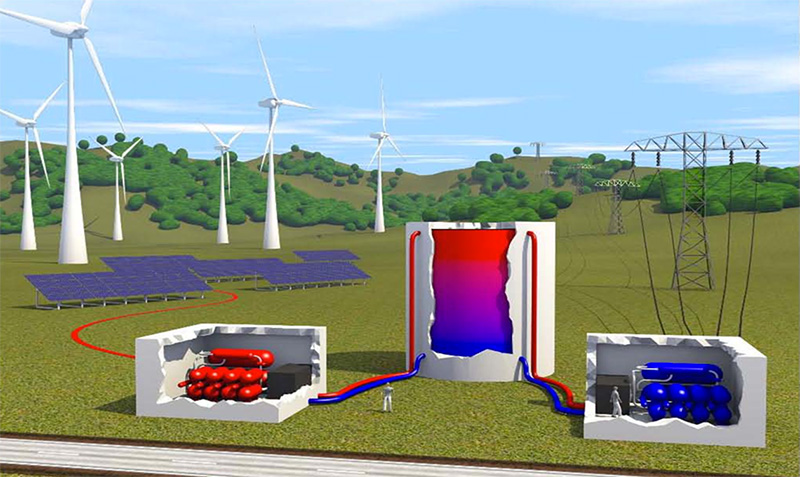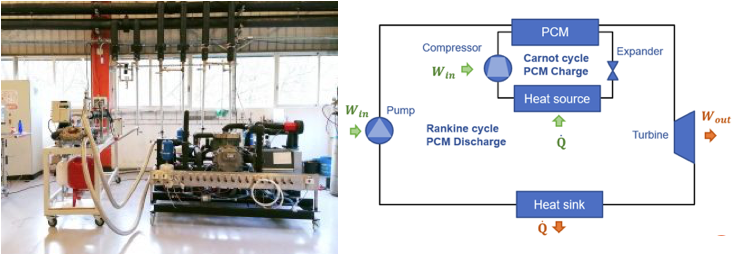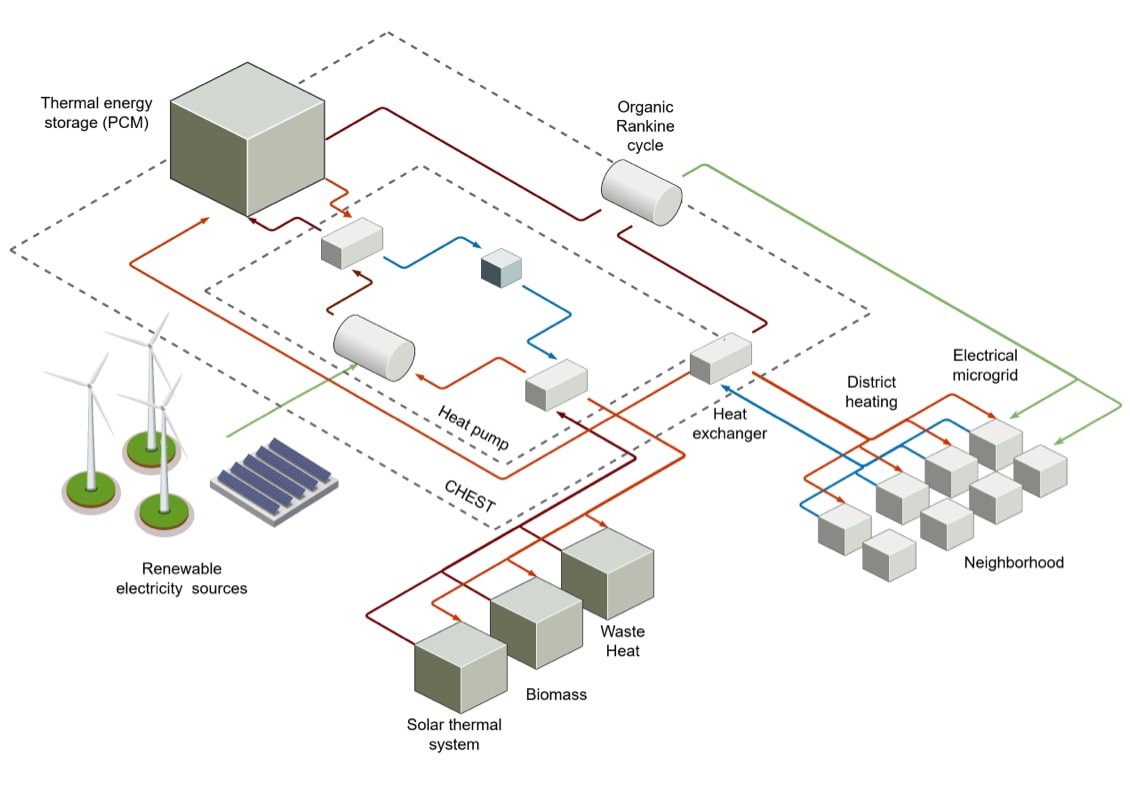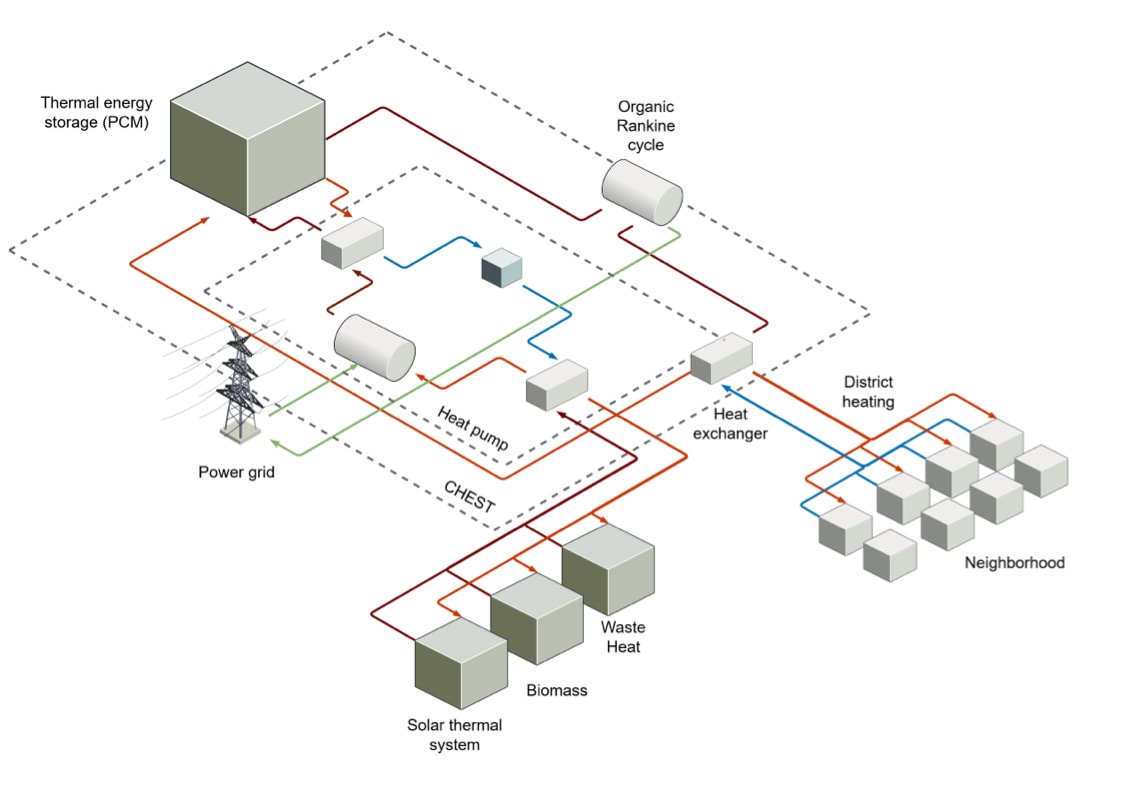
This project has received funding from the European Union's Horizon 2020 research and innovation program under grant agreement nº 764042
CHEST Sizing and Feasibility
Assessment Tool Report

Compressed heat energy storage for
energy from renewable sources.
Developed by:
Introduction
With the EU setting goals for the member states to reduce their energy consumption by year 2050, efficient energy usage is of great significance in the current day Europe. Thus, innovations in the sphere of efficient energy use and management are of critical importance.
Addressing the issue, CHESTER project aims at developing a cost competitive innovative system that will allow for energy management, storage and dispatchable supply of many different renewable energy sources (RES) through the combination of electricity and heat sector. The system is expected to be site-independent (unlike pumped hydro), cyclically stable (unlike batteries), able to convert power into heat, able to convert renewable low temperature heat into power and able to store and deliver independently from each other upon request both, heat and power.
 View of the experimental CHEST (left) and schematic layout of the system.
View of the experimental CHEST (left) and schematic layout of the system.
The aim of this report is to give a first system dimensioning and performance values and also analyse the feasibility of implementing the CHEST technology in your current energy system. Based on the entered characteristics of your demands, electrical and thermal, the tool dimension the CHEST system components according with the requirements of each assessed demand.
User Defined Parameters
This section presents the user defined parameters regarding the maximum charge and discharge capacity, system location, thermal loads, residual heat source and external heat demand if any.
- Operational mode
- Maximum charge and discharge capacity
- Charge capacity:
- Discharge capacity:
- Location
- Latitude:
- Longitude:
- Country:
- Renewable electricity sources
- Wind power
- Number of wind turbines:
- Average turbine power:
- Solar power
- Installed peak PV power:
- Slope:
- Azimuth:
- Electrical load of the system
-
-
Standard load definition* Advanced load definition
-
Electrical load curve
Default annual electrical load curve for the selected country*When no load curve for the selected country is available an average load curve is used
-
- Daily load profile (hours)
- Weekly load profile (days)
- Yearly load profile (months)
Electrical load curve
- Annual electrical consumption:
-
- Electricity price
- Average electricity price:
- Forecasted price increment:
- Simulation electricity price:
- Heat source
-
Waste heat
- Daily load profile (hours)
- Weekly load profile (days)
- Yearly load profile (months)
Waste heat curve- Annual available waste heat:
- Heat source temperature:
- Heat source purchase price:
-
- Solar thermal
- Area of the solar thermal system:
- Heat source temperature:
-
- Biomass
- Heat source temperature:
- Heat source purchase price:
- Required boiler power*:
- * The required boiler power capacity is given by the nominal power of HP.
- Heat demand
-
District Heating
- Supply temperature:
- Return temperature:
District heating heat demandEstimated annual district heating heat demand, adjusted by location meteorological dataAnnual heat demand:Heat selling price: -
Other
- Supply temperature:
- Return temperature:
-
- Daily load profile (hours)
- Weekly load profile (days)
- Yearly load profile (months)
-
Heat demand
Annual heat demand curve computed from user’s inputs
- Annual heat demand:
-
Heat selling price:
Results
This section presents the results of the CHEST energy system, including the main design parameters of it, the performance of the PCM storage, the thermal and electrical balances and performances and the investment costs of the overall system.
CHEST Main Design Parameters
- ORC
- Nominal power:
- Efficiency:
- Heat pump
- Nominal power:
- COPth:
- PCM Storage
- Capacity:


Energy Results
Monthly thermal energy stored by the PCM
CHEST Capacity factor*
* The capacity factor indicates ratio of an actual electrical energy output over a given period of time to the maximum possible electrical energy output over that period. Therefore, the percentage shown here, indicates the percentage of annual hours at which the CHEST system, working at nominal power, is exchanging electricity with the grid.
Thermal balance
- Annual heat from heat source:
- Annual heat stored in PCM:
- Annual heat from ORC:
- Thermal Efficiency:
- Annual heat demand:
- Annual heat delivered to heat demand:
- Percentage of heat demand covered:
Electrical balance
- Annual electricity generated by Wind power:
- Annual electricity generated by Solar power:
- Total renewable electricity generated:
- Annual electricity generated by ORC:
- Annual electricity generated by Back-up
power system: - Annual electricity absorbed by HP:
- Annual electricity absorbed by load:
- Total electricity demand:
- Percentage of electricity demand
covered by renewable sources: - Percentage of electricity demand
covered by non-renewable sources: - Overall Power to Power Ratio:
- Annual electricity absorbed from Grid:
- Annual electricity generated by ORC:
- Overall Power to Power Ratio:
Investment Costs
CAPEX distribution [%]
- ORC:
- HP:
- PCM:
- Other costs (*):
- Total CAPEX:
Financial Results
- Maintenance cost (**):
- Total OPEX (***):
- Total Cost of Ownership
- (Total CAPEX + Total OPEX):
- Cost of energy:
- Maintenance cost (***):
- Total OPEX (****):
- Total Cost of Ownership:
- (Total CAPEX + Total OPEX):
- Average electricity purchase price:
- Average electricity sale price:
-
Monthly revenues [k€]
Monthly CHEST revenues from electricity and heat sales. - Annual revenues:
- Operation profits (**):
- Percentage of annual
revenues from electricity sales: - Percentage of annual
revenues from heat sales: - Payback time (****):
- Internal Return Rate (IRR) (****):
Disclaimer
This report has been prepared and issued by the CHESTER tool developers. The results generated by the CHESTER public tool provide a first indication on the impact of implementing a CHEST system with the user's specifications, although actual numbers may differ. This tool has been complied with the greatest possible care but no rights may be derived from its content.











